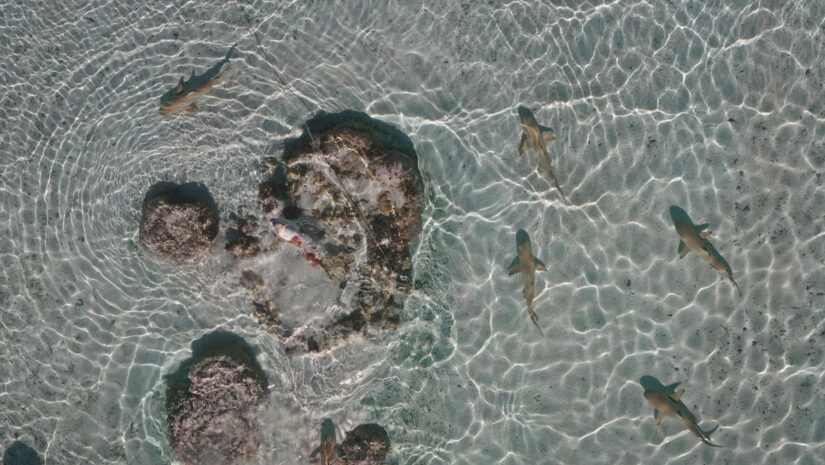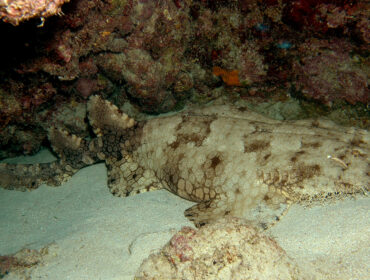Did you know that baby sharks can be born in three different ways? People often imagine that all sharks give birth in the same way, yet the ocean is always full of surprises. Some sharks lay eggs, some store the eggs safely inside their bodies until their offspring are ready, and some sharks give birth to live pups, just as mammals do. In this article, you’ll learn about the three methods for newborn sharks to come into the world. You will also learn which sharks are pregnant for the longest time, which shark eggs take the longest time to hatch, and some other fun facts about young sharks! But before we can get into that, we first need to know how sharks mate!
What happens when a mommy shark and a daddy shark love each other very much?
Before baby sharks can begin to grow, a mommy and daddy shark need to come together. Like many animals, sharks have a special way of mating. When sharks are ready, the male will often follow the female and may use gentle bites or nudges to show he is interested. Once the female agrees, the male uses his special fins, called claspers, to help his sperm reach the eggs inside the female’s body. This is how the eggs become fertile and a new baby shark can begin to develop. After mating and fertilization, sharks have one of three amazing ways to bring their babies into the world.
Egg Laying Sharks (Oviparity)
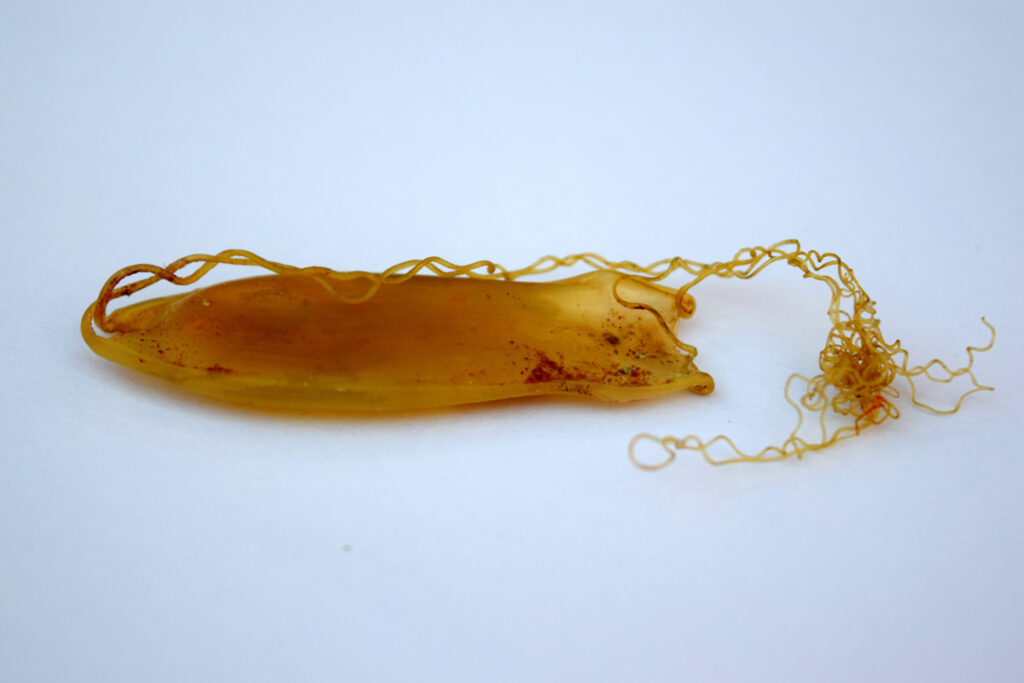
Some sharks lay eggs. This way of having babies is called oviparity. A mother shark lays eggs in the water, then leaves them to hatch on their own. These eggs are often inside a tough case that looks like a small dark purse with curly tendrils at each corner. People sometimes call these “mermaid’s purses.” The egg case keeps the baby shark safe from many dangers as it grows inside.
Shark eggs become fertile when the mother and father shark come together and mate. The father shark places sperm inside the mother shark. The eggs inside the mother then get fertilized and are laid soon after.
One good example of an egg-laying shark is the catshark. Catsharks are small and live close to the sea floor. The eggs they lay are about two to four inches long, and they are easy to find along some beaches. Other sharks that lay eggs are the swell shark and the bamboo shark. Swell sharks lay round eggs while bamboo sharks lay long, flat eggs. The horn shark, found along the coast of California, also lays eggs in spiral cases.
Shark eggs can take a long time to hatch. Some will hatch in just a few months, about two to four months, but others take much longer. The record for the longest time to hatch belongs to the Small Spotted Catshark. Its eggs can take up to 12 months to hatch. The baby shark stays safe inside the egg case, feeding off the yolk inside until it is big enough to break out and swim away.
Eggs That Hatch Inside the Mother (Ovoviviparity)
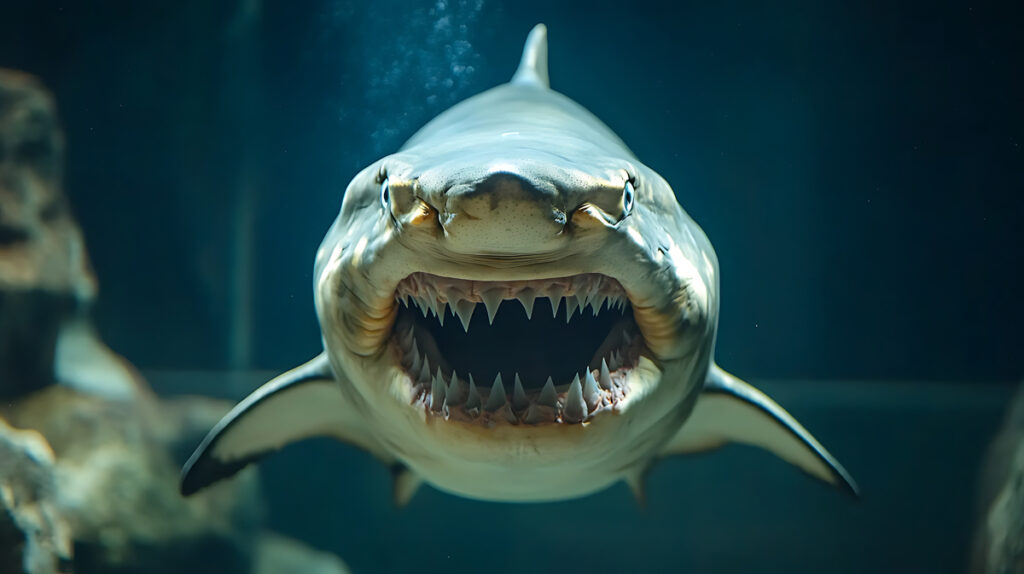
Some sharks keep their eggs inside their bodies until the babies are ready to be born. This is called ovoviviparity. The eggs hatch inside the mother, and then the babies come out fully formed.
The sand tiger shark, also called the grey nurse shark, has a very special way of making babies. After the eggs are fertilized, they are placed in small groups inside the mother. At first, there can be about 16 to 23 eggs in a group. But soon, only the strongest two baby sharks survive in each group. The bigger baby sharks eat their smaller brothers and sisters, and also eat extra eggs. This is a special type of cannibalism called adelphophagy, which means “eating one’s brother.” As a result, only the strongest and biggest babies are born, and they have full stomachs at birth.
Cannibalism inside the mother
But sand tiger sharks are not the only sharks that practice this kind of behavior. About 14 different shark species do some type of cannibalism inside the mother. In some cases, this is less extreme and is called oophagy, where baby sharks eat eggs inside the mother that have not been fertilized. These strategies help the baby sharks become bigger and stronger before they are born.
Whale sharks and nurse sharks are both more mellow when it comes to having babies. These sharks do not eat each other before birth. Instead, after the eggs are fertilized, they stay inside the mother until the pups are ready to be born. A whale shark can give birth to a very large number of pups, sometimes more than 300 at once, each already about 16 to 24 inches long. Nurse sharks can give birth to about 20 to 30 pups at a time, each pup around 11 to 12 inches long. Because these sharks do not practice cannibalism inside the mother, many more babies are born together and start their lives at the same time.
Fun fact! The shark that is pregnant the longest is the frilled shark. It uses ovoviparity. The pregnancy of a frilled shark can last up to three and a half years, which is about 42 months. This is the longest known pregnancy of any shark or any animal in the world.
Live Birth Sharks (Viviparity)
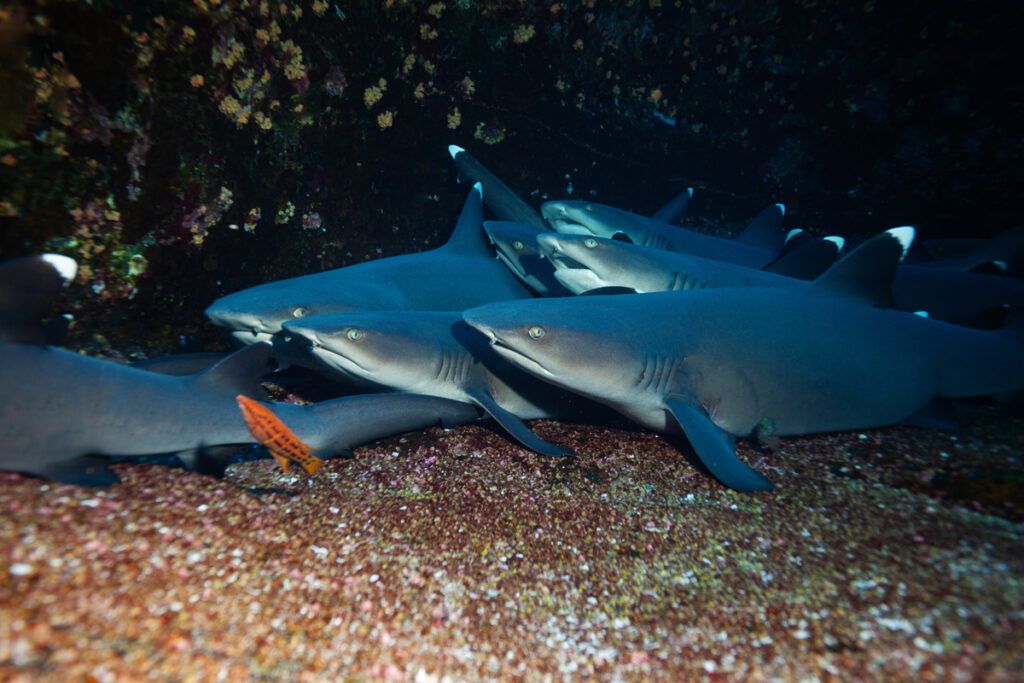
Some sharks give birth to live baby sharks. This is called viviparity. These sharks do not lay eggs at all. Instead, the baby sharks grow inside the mother’s body and are born already able to swim. This is a little like how many mammals have babies, but sharks have their own special way. Most live birth sharks do not have a true placenta like humans, but some have a simple cord to bring food from the mother to the baby.
Viviparity helps baby sharks survive because they stay safe and fed inside the mother until they are strong enough to be born. The number of baby sharks a mother can have is different for each species. Some sharks only have a few babies at a time, while others can have many more.
Bull sharks are a great example of live birth sharks. They can be found in warm salt water and even in rivers that lead far from the sea. Baby bull sharks are born in places that are calm and shallow, such as river mouths or sheltered bays, which helps keep them safe from bigger animals.
Lemon sharks also give birth to live pups. They are usually seen in warm, shallow waters near the coast. When lemon sharks are born, they often stay together in groups called nurseries. This gives them more safety from predators.
Blue sharks are another kind of live-bearing shark. They are famous for having very large litters. A mother blue shark can give birth to as many as 135 pups at one time. Each baby can be about 16 inches long at birth. Blue sharks live in open oceans and swim great distances, so their young need to be strong swimmers from the start.

